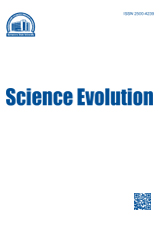Россия
Россия
ГРНТИ 27.01 Общие вопросы математики
ГРНТИ 31.01 Общие вопросы химии
ГРНТИ 34.01 Общие вопросы биологии
In 1993, karyotyping of Opisthorchis felineus sporocysts, isolated from aquatic mollusks Bithynia inflat a in the industrial wastewater of the Siberian Chemical Combine discovered cytogenetically modified 12-chromosome specimens. In 2012-2013, a repeated study of the spread of these mutant trematodes in the lower course of the river Tom was carried out. It was established that specimens with sporocysts of O. felineus having 2n=12 were found in 8 of 10 places of catching. The caught goldfish were used to isolate metacercariae to infest golden hamsters in the experimental conditions. After 5 months, the hamster livers were processed to extract marita specimens and the number of chromosomes in their ovaries and testes was cytogenetically determined. The results of analysis of the spread of O. felineus carried out by this method showed the presence of 12-chromosome form of the Opisthorchis marita in all places of fishing out in the lower course of the river Tom. Analysis of the 12-chromosome karyotype allows to conclude that this mutation was a result of Robertsonian fusion of chromosomes 3 and 6 of 14-chromosome form of karyotype.
Opisthorchis felineus, karyotype, Robertsonian translocation, Tom River
1. Barshene Ya.V. Khromosomnye kompleksy trematod [Chromosome complexes of Trematoda]. Parazitologiya [Parasitology], 1993, vol. 27, pp. 336-352.
2. Beer S.A. Biologiya vozbuditelya opistorkhoza [The Biology of Opisthorchiasis Agent]. Moscow: Tovarishchestvo nauchnykh izdaniy KMK Publ., 2005. 336 p.
3. Viktorov A.G. Radiochuvstvitel’nost’ i radiopatologiya dozhdevykh chervey, ikh ispol’zovanie v bioindikatsii radioaktivnykh zagryazneniy [Radio-sensitivity and radiopathology of earthworms and their use as bioindication of radioactive contamination]. Bioindikatsiya radioaktivnykh zagryazneniy [Bioindication of radioactive contamination.] Moscow: Nauka Publ., 1999, pp. 213-217.
4. Dubinin N.P. Evolyutsiya populyatsiy i radiatsiya [Evolution of Populations and Radiation] Moscow: Atomizdat Publ., 1996. 743 p.
5. Zadesenets K.S. Strukturno-funktsional’naya organizatsiya khromosom opistorkhid. Avtoref. diss. kand. biol. nauk. [Structural and functional organization of opistorhid chromosomes. Cand. biol. sci.]. Novosibirsk, 2013. 26 p.
6. Il’inskikh N.N., Vengerovskiy A.I., Lepekhin A.V., Zuevskiy V.P., Il’inskikh E.N. Meditsinskaya parazitologiya [Medical Parasitology]. Tomsk: Pechatnyy dvor Publ., 2001. 334 p.
7. Il’inskikh N.N., Il’inskikh I.N., Il’inskikh E.N. Evolyutsiya khromosomnogo nabora trematod Opisthorchis felineus, otlovlennykh v mestakh sbrosa radioaktivnykh otkhodov Sibirskogo khimicheskogo kombinata [Evolution of the chromosome set of Opisthorchis felineus trematode, caught in radioactive waste dumping sites of Siberian Chemical Combine]. Mezhdunarodnaya nauchno- prakticheskaya konferentsiya “20 let Chernobyl’skoy katastrofy: ekologicheskie i sotsial’nye uroki [International Scientific and Practical Conference: 20 years after Chernobyl: Social and Economic Problems]. 2006, Moscow: Nauka Publ., pp. 59-63.
8. Kudryavtsev D.P. Metodicheskie podkhodya po vydeleniyu metatserkariev opistorkhov iz ryby i modelirovanie opistorkhoza na laboratornykh zhivotnykh [Methodological approaches to allocate opisthorchis metacercariae from fish and modeling opisthorchiasis on laboratory animals]. Fundamental’nye nauki - meditsine [Basic Sciences of Medicine]. Tomsk: SibSMU Publ., 1989, p. 41-44.
9. Ono S. Geneticheskie mekhanizmy progressivnoy evolyutsii [Genetic mechanisms of progressive evolution]. Moscow: Mir Publ., 1973. 227 p.
10. Polyakov A.V., Katokhin A.V., Bocharova T.A., Romanov K.V., L’vova K.N., Bonina O.M., Yurlova N.I., Mordvinov V.A. Sravnitel’nyy analiz Opisthorchis felineus iz Zapadnoy Sibiri [Comparative analysis of karyotypes of Opisthorchis felineus from West Siberia]. Sibirskiy ekologicheskiy zhurnal [Siberian Journal of Ecology], 2010, vol.1, pp. 3-6.
11. Rikhvanov L.P. Obshchie i regional’nye problemy radioekologii [General and regional problems of radioecology]. Tomsk: Tomsk Polytechnic University Publ., 1997. 384 p.
12. Romanenko L.N. Morfologiya khromosom Opisthorchis felineus (Rivolta, 1884) [Chromosome morphology in Opisthorchis felineus]. Mater. nauchn. konf. Vsesoyuz. o-va gel’mintol. [Proceedings of the scientific conference of the All-Union Society of Helminthologists]. Moscow: Nauka Publ., 1973, pp. 183-188.
13. Toropov A.V. Nakoplenie tekhnogennykh radionuklidov komponentami ekosistemy nizhney Tomi. Avtoref. diss. kand. biol. nauk. [Accumulation of man-made radionuclides in lower Tom ecosystem components. Cand. biol. sci. thesis]. Novosibirsk, 2006. 24 p.
14. Grossman A.I., Short R.B., Cain G.D. Karyotype evolution and sex chromosome differentiation in Schistosomes (Trematoda, Schistosomatidae). Chromosoma, 1981, vol. 84, p.413-430.
15. Ilyinskikh N.N., Ilyinskikh I.N., Porovskiy V.A., Natarajan A.T., Suskov I.I., Smirenniy L.N., Ilyinskikh E.N. Biodosimetry results obtained by various cytogenetic methods and electron spin resonance spectrometry among inhabitants of a radionuclide contaminated area around the Siberian Chemical Plant (Tomsk-7). Mutagenesis, 1999, vol. 14, pp. 473-478.
16. Ilyinskikh E.N., Novitskiy V.V., Urazova L.N., Isayeva T.M., Ilyinskikh I.N., Ilyinskikh N.N. Assessment of the relationship of chronic opisthorchiasis to Epstein-Barr virus infection as well as some cytogenetical and immunological parameters in two comparable Siberian regions. Environ. Toxicol, 1999, vol. 14, pp. 414-424.
17. Short R.B., Liberatos J.D., Teehan W.H., Bruce J.I. Conventional Giemsa-stained and C-banded chromosomes of seven strains of Schistosoma mansoni. J Parasitol. 1989, vol. 75, pp. 920-926.
18. Song C.C., Duan Y.F., Shou G.C., Zhu H. Studies on the use of cobalt-60 gamma irradiation to control infectivity of Clonorchis
19. sinensis metacercariae. Southeast Asian J Trop Med Public Health, 1992, vol. 23, pp. 71-76
20. Terasaki K. Studies on Chromosomes of the lung flukes in Japan. Jpn J Parasitol., 1977, vol. 26, pp. 222-229.
21. Zadesenets K.S., Karamysheva T.V., Katokhin A.V., Mordvinov V.A., Rubtsov N.B. Distribution of repetitive DNA sequences in chromosomes of five opisthorchid species (Trematoda, Opisthorchiidae). Parasitol Int., 2012, vol. 61, pp. 84-86. doi:https://doi.org/10.1016/j. parint.2011.06.027










